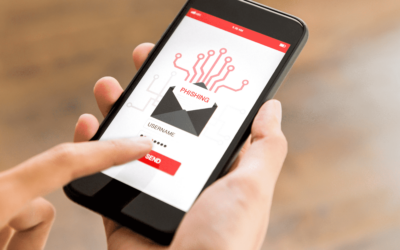Medication errors have the potential to occur frequently and when we least expect them. Whether it be human error involved in filling the prescription or dispensing it, they can happen at any stage in the process.
According to the National Institute of Health. Each year, in the United States alone, 7,000 to 9,000 people die as a result of a medication error.
By prioritizing patient safety and adopting proactive measures, pharmacies can significantly reduce medication errors – saving lives in the process. In this blog post, we will explore the common causes of medication errors and share seven effective strategies to enhance medication safety and best practices for reducing medication errors in the pharmacy.
1. Avoid Multitasking
Juggling multiple tasks such as answering phone calls while handling drop-offs and also filling medication all at once may be “efficient” but can cause errors. One way to avoid multitasking would be to delegate each member of the team certain roles that they would each be responsible for.
2. Reduce Stress
Time and time again we hear how the pharmacy profession, especially community pharmacy roles, is extremely stressful. Increasing workloads, extra hours with pay that does not match, all combined with no breaks is a recipe for disaster. Finding ways to reduce stress within your day, will be key to focusing on the tasks at hand and helping your customers to the best of your ability. Whether this is adding a technician to your team, allowing college interns, adding a coffee maker to the pharmacy – anything that will bring calmness and peace to your day, consider implementing it.
3. Organize Storage
There are several drugs that lookalike and soundalike. It’s important to ensure that they are either stored away from each other or that there is a distinct way to differentiate them. Properly organizing medication bottles in a systematic manner where the label is visible may be a good idea.
4. Verify Orders
Mistakes can be made when prescriptions are called in by phone and not verified. It is important to repeat the order back to ensure that everything written down was heard correctly. Don’t be afraid to ask the healthcare provider on the other line to slow down or repeat things if necessary.
5. Trust Yourself
It is always important to trust your gut when practicing in the healthcare profession because your license is on the line. When you receive a script and something doesn’t seem right, dig deeper and call the prescriber or question the patient. Sometimes mistakes are made and other times clarification is needed about why something has been prescribed.
6. Declutter and Keep the Work Area Clean
Try to put things back where they belong, especially medications pulled off of shelves. Keep every patient’s medication and prescription separate to avoid mixing them up. Clear the counter and avoid leaving open drinks and food near prescriptions and medications.
7. Get to Know Your Patients
Involve the patient and converse with them. When the patient comes to pick up their medication, taking a minute or two to ask them questions can help catch any errors before handing them a medication. Ask them what they are looking for, if they have any questions and if they are picking up for themselves or a family member.
Providing counseling can help ensure that patients understand how to take their medication, possible side effects and what they are taking the medication for. This is also an opportunity to catch mistakes with their prescription dosage by getting a more in-depth understanding of patients medical history and their specific needs.
Here are a few considerations you will want to consider when verifying if the patient’s prescription is safe:
- Consider the Age of Your Patient
Always check the patient’s age and keep in mind their body weight too. It is important to ensure that the dose is correct. Children and the geriatric population tend to be sensitive to medications so you need to derive the correct dose for them.
- Consider Liver and Kidney Function
Medication errors can also occur when liver and renal function are not considered. Patients with liver and renal dysfunction need dose adjustments otherwise toxicity can occur.
- Consider Allergies
Communicate with patients to record any known drug allergies in the system. Dispensing a drug that the patient has an allergy to can cause severe side effects to the patient that were potentially avoidable. Be sure to review the patient chart and ask for any known allergies.
8) Implement Technology to Streamline Pharmacy Workflow
Improving your pharmacy workflow and implementing technology that can help reduce distractions and interruptions so your team can focus on making sure the patient in from of them is taken care of and has exactly what they need.
Here are a few tools that you can implement to keep your pharmacy running efficiently and help minimize distractions.
- Interactive Voice Response (IVR). This automated system can reduce the amount of time your staff has to spend on the phone, enabling patients to refill and transfer prescriptions and get essential pharmacy information.
- Secure 2-way messaging. Streamline patient communication on a secure platform that helps you send reminders, share images, and contact patients quickly and easily.
- Website & mobile app. Having self-serve options on your website and mobile app can automate refills and appointment scheduling, saving your pharmacy time and letting you focus on what is most important – your patients.


